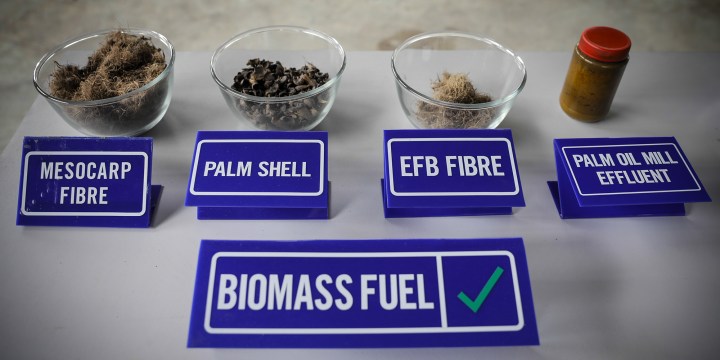OUR BURNING PLANET OP-ED
The bio-economy can create thousands of jobs and boost our supply chains – here’s how

The benefits of the bio-economy need to be embedded into relevant national policies. To date, the development of these policies has been slow and ineffective. Voluntary sustainability schemes have thus emerged to fill the legislative gap, not all of which have the ultimate goal of good stewardship.
The International Monetary Fund (IMF) estimates that the global gross domestic product (GDP) will shrink by almost 5% as a result of Covid-19 – the biggest slump since The Great Depression of the 1930s.
As policymakers and businesses consider the way forward, many have been calling for a green recovery under a “Build Back Better” campaign, to limit the impact of future pandemics and crises such as climate change.
Moving our economies from a linear “use and refuse” production and consumption model towards a more circular bio-based economy offers opportunities for countries to rebuild their economies in an environmentally and socially inclusive manner.
But what is the bio-economy, and what is its role in the green recovery? In simple terms, a bio-economy is the use of bio-based resources to produce various products in our economy such as fuels, chemicals, plastics, fabrics etc.
Covid-19 has undoubtedly exposed weaknesses and fragilities in our global supply chains, as the supply of a great many products has been disrupted due to lockdowns across the world. This has also resulted in massive job losses across the entire spectrum of the economy, affecting skilled and unskilled workers.
If insanity is repeating the same actions and expecting different results, the world needs a bit more sanity. Without a new approach, inevitable future disruptions will decimate carbon-intensive supply chains.
The bio-economy builds resilience in our supply chains by being based on a distributed and decentralised model in contrast to vertically integrated, centralised fossil-based industries. The fossil industries were built on the principle of economies of scale, with the idea of making the largest facility possible. Think of the large petroleum refineries in Saudi Arabia or, closer to home, Sasol’s Secunda plant. In the bio-economy, although the concept of economies of scale still applies, there’s also the concept of economies of feedstock supply. Unlike the dense crude oil or coal used by fossil industries, bio-based feedstocks like wood waste are typically more distributed and less dense, therefore more costly to transport over long distances. As a consequence, facilities that utilise bio-based products tend to be smaller and less centralised. This “bio-refinery” model, the bio-based equivalent of petroleum refineries, ultimately results in a larger number of shorter, more localised supply chains, ensuring that the bio-economy is more resilient to future shocks.
Because a significant portion of bio-based feedstocks come from the agricultural sector, the bio-economy offers a significant opportunity to grow and protect jobs and thereby stimulate economic development in rural farming communities. The South African sugar industry is a good example. Diversifying this industry to produce bio-based fuels and chemicals offers a critical solution to save many at-risk jobs.
More agricultural jobs can come from producing bio-energy crops on surplus land available for energy crop production once food requirements and environmental protection are fully achieved. About 80-180% of the aviation fuel demand in South African can be satisfied by energy crops grown on such surplus land without compromising our ability to produce sufficient food or protect our environment. Some of these biofuel feedstocks can be grown on abandoned mining or degraded land, contributing to the rehabilitation of these areas.
In addition to agricultural crops, South Africa has a plethora of other bio-based feedstocks such as forestry residues, municipal solid wastes and invasive alien plants (IAPs). Collection and extraction of these feedstocks has the potential to create thousands of much-needed jobs.
The bio-economy also offers many opportunities to develop skilled jobs in South Africa, albeit at a smaller number than those in the agricultural and waste collection sectors. New industries will arise based on the different processing technologies for fuels and chemicals production. These industries will require the expertise of engineers, scientists and technicians from various disciplines, which can be produced by our local universities.
Covid-19 has also exposed the limited flexibility and adaptability of our value chains. Locally, a drop in demand of liquid fuels resulted in a halt in production at Sasol’s Natref refinery. The bio-economy offers the opportunity of flexibility through a wider range of products than the conventional petrochemical processes.
A typical bio-refinery produces fuel, chemicals, feed, and fibre. As an example, the seed of Solaris tobacco developed by Sunchem International can be pressed to produce oil and a press cake. The oil can be further processed into green diesel or jet fuel, while the press cake can be used as an animal feed (say for chickens, ideally consumed aboard a biofuel-fuelled flight). The plant fibre can be used to produce power consumed during feedstock processing, while a portion of it is left in the field to add nutritional value. This is an example of bio-economy circularity, where natural resources are used more efficiently while waste and pollution are minimised, ultimately resulting in a lower climate impact.
Another example is the LanzaTech gas fermentation facility that will be launched in South Africa in the near future by Swayana. LanzaTech’s flexible biological process uses a biocatalyst to produce a range of chemicals from non-commodity, price-stable waste streams, avoiding the need to use virgin fossil resources. LanzaTech’s biocatalyst is akin to “software” and the production plant, the “hardware”. To change products requires a “software upgrade” (swapping one microbe for another). Suppose that the market demand for ethanol drops, various co-products such as butanediol and other alcohols could be produced using the same infrastructure already in the ground. The dried, spent microbes can also be used as an animal feed (eg, for freshwater fish farms in the area).
In order for these benefits to be realised, they need to be embedded into relevant national policies. Unfortunately, development and implementation of such policies and regulations have been slow or ineffective. As a response to policy failure, voluntary sustainability schemes emerged to fill the legislative gap and private actors can choose between a wide variety of them; though it has to be noted that not all ensure the ultimate goal of good stewardship or sustainable use of our biomass resources, and some have been used for greenwashing.
From the above, it is clear that the bio-economy is a critical component of “Building Back Better”. Not only does it offer the opportunity to grow new industries and open job potential, but it has several environmental benefits and significantly improves the resilience of our supply chains to future shocks and climate change.
After the 2008 recession, the economic recovery was energy and carbon intensive, centred on investment into industries like coal and oil. A post-pandemic economic recovery of a similar fashion would be insanity. As we Build Back Better, we need to recognise the role of the bio-economy in creating a more resilient and self-sufficient society and ensure a proportion of recovery funds is directed towards its development. DM
Farai Chireshe is a chemical engineer and bioenergy analyst at WWF South Africa. Tjaša Bole-Rentel is WWF South Africa’s bioenergy programme manager.



















 Become an Insider
Become an Insider